16. Amarcord (1973)
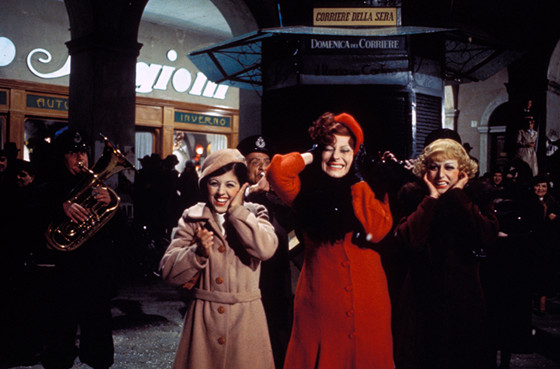
Italy’s Federico Fellini managed a considerable trick in getting the film going world to see him as among the greatest of film makers even though he had not had an unalloyed hit since 1963’s 8 1/2. The films which came afterward became increasingly more phantasmagorical and rather self indulgent, not to mention repetitive. However, in 1973 he surprised everyone with his simplest and most cheerfully restrained film in years and one that was perhaps his last truly fine picture.
Amarcord translates to “I Remember” in English and there can be absolutely no doubt as to the I who is remembering. In fact, this could easily be a prequel to Fellini’s first big hit 1953’s I Viteloni, which followed the lives of aimless young men in a seaside Italian village in the 1940s. Here the young men are boys, with the focus on young Titta (Bruno Zanin), without a doubt Fellini’s surrogate.
The very loose plot follows the joys (mostly) and some sadder moments, along with funny and wild ones, in the course of a year during the late 1930s. Yes, Italy is in the grip of the Fascist (and there is a surreal scene at a Fascist youth parade) but life is lovely when one is young and everything is an adventure.
Like so many other films on this list, the director-writer poured himself into this project and had the imagination and skill to render the facts of his world and feelings interesting and accessible to the viewer (even it does seem a bit rosy). Somehow, Fellini would not learn the lesson this success could teach him and was too soon over the top yet again (despite an Oscar for this effort). However, Amarcord stands as a charming souvenir of a unique talent.
17. The Spirit of the Beehive (1973)
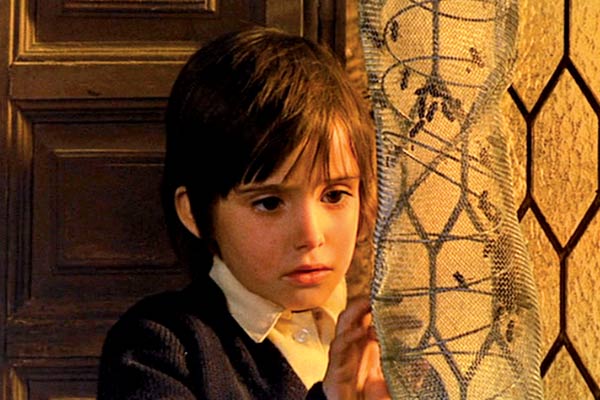
It must be tough to scale the pinnacle once, especially early on, and never reach that mark again (though surely even rougher to never make it at all). Spain’s Victor Erice could verify to this since he created what many consider a masterpiece on his first try and never did anything notable thereafter. But he had the one! The Spirit of the Beehive is widely considered to be one of the best, most comprehending, most intuitive films centering on childhood.
In a little town in rural Spain during the brief moment of peace between the Spanish Civil War and World War II, a travelling movie projectionist arrives to show 1931’s Frankenstein, several years old but new to the inhabitants. Very young sisters Isabel (Isabel Telleria) and Ana (Ana Torrent) attend, sent by their parents who are having a troubled relationship (the youthful mother is in love with a long absent younger man).
Imaginative Ana is quite taken with the film, especially the scene between the monster and the little girl he inadvertently drowns. She wants to know why the monster kills the girl and why the villagers kill him and Isabel, not knowing the real answers, tells her that no one died and, in fact, the monster lives in the woods near the house and Ana might find him if she believes and wishes hard enough.
This simple lie will cause Ana to plug this explanation into several of the troubling situations involving the adult world around her but also cause her consternation when the explanations she formulates don’t end up holding water. However, she and the viewer get a bit of a surprise towards the end.
The film is serene, composed, subtle and deeply felt in its measured pace. It does give the viewer a feeling of looking into the world of other people in another time and place. Why did Erice have no suitable follow-up? Where, in the end, does even one wonderful piece of work originate?
18. Celine and Julie Go Boating (1974)
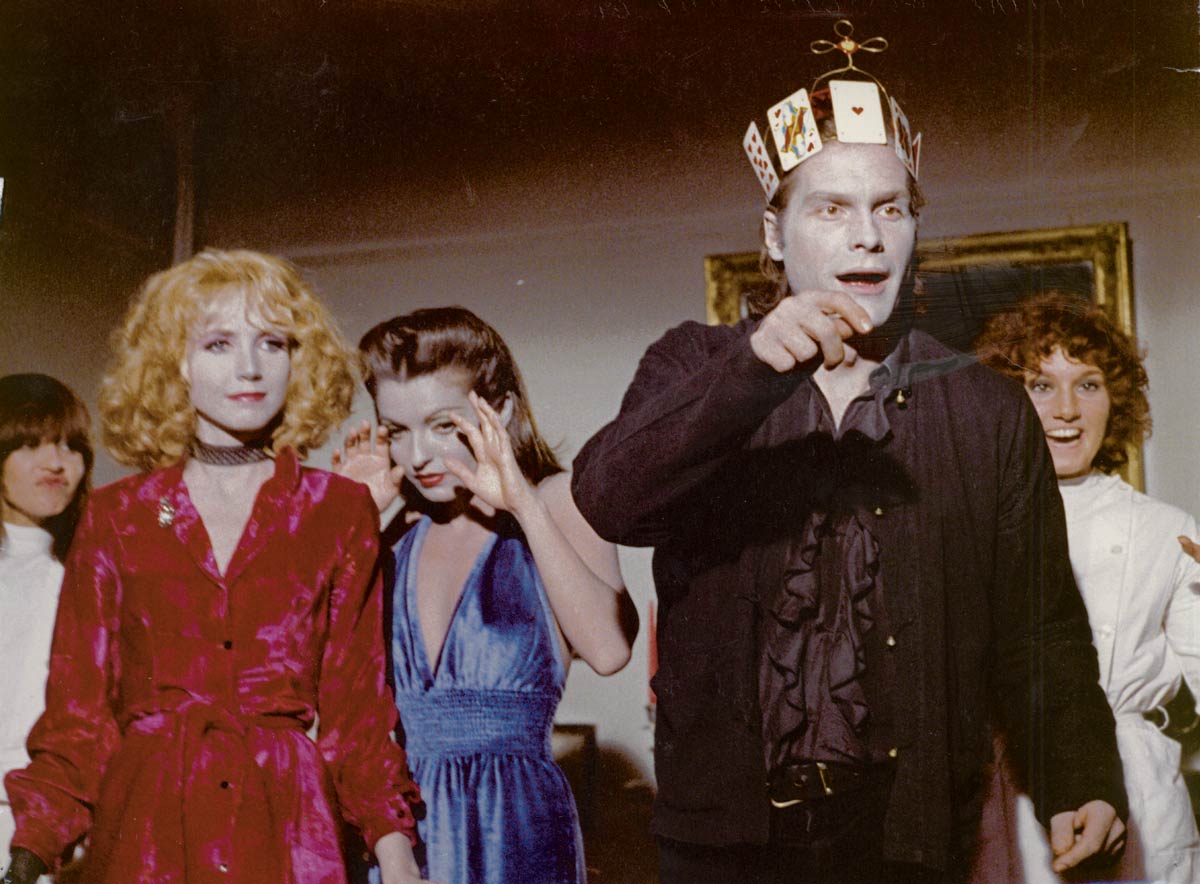
Unique is a word which comes up a lot in discussing rich and extraordinary talents but few words would be a better fit for the memorable French film maker Jacques Rivette. (Incidentally, Rivette died during the writing of this article and the obituaries bore out how great a reputation he had in the film world.) Every Rivette film was special but one of the most striking (and best) was Celine and Julie Go Boating, which truly is like no other film and could not truly be imitated.
How can this film even be described? Well, Julie (Dominique Labourier) is trying to teach herself to be a magician and Celine (Juliet Berto) comes by her as she’s sitting in the park and Celine starts to drop a trail of objects as part of a trail by which Julie must follow her all over Paris.
Anyway, they end up in an oddly conjoined relationship and sharing a flat. But that’s not all, as a hunted house mystery and other mystical things fill their lives for nearly four hours of screen time (and it turns out Celine is, in fact, a magician, though both women leave their jobs to pursue the real magic qualities of life).
The film, which employs a wide array of techniques, is a delight as it weaves a spell every bit as magical as the wild ride of life the two heroines choose to take (and it was also quite exceptional to see a film centering on the relationship of two women at a time when male-male relationship films were the order of that cinematic day).
19. Ali: Fear Eats the Soul (1974)
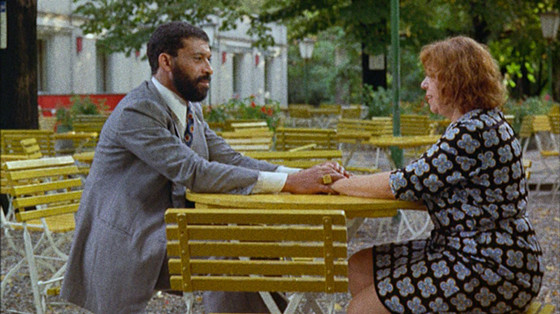
The term unique can be taken many ways. Up to this point, this list has listed unique artists who were sensitive, poetic, loving, and beautiful among so many fine qualities. This list now comes to someone unique in quite another way as he was harsh, cruel, profane and a real psychological mess but also highly creative and as knowing as he was prolific. This could be none other than Germany’s Rainer Werner Fassbinder, one of the most problematic figures in film history.
Fassbinder was openly and wildly gay and loved drink and drugs and when the later combined to put an end to him at 37 in 1982, the only thing that surprised most who knew him was that it took so long to happen. However, he also created some 40 film and TV productions and his quality was, on the whole, quite high. He loved the “plastic” style of classic Hollywood, in particular the films of his idol, Douglas Sirk (a German who found bittersweet success in Hollywood).
Fear Eats the Soul (sometimes known as Ali: Fear Eats the Soul) is something of a remake of Sirk’s 1954 film All That Heaven Allows, the story of a well to do widow (Jane Wyman)in early middle age who must learn to risk the wrath of her rather spoiled children and the country club set to find love and happiness with the handsome young landscaper (Rock Hudson) who is romancing her.
Fassbinder was one of the first to catch the emotional resonance under the film’s glossy surface and helped revive it to a greater reputation than it had originally known. As a sop to the leading man, a by-then cast off flame of the director’s, Fassbinder retooled the story’s setting to modern day Germany and changed the characters to a glamourless cleaning lady (Brigitte Mira), deep in middle age, who just happens to meet an illiterate and rather lost Moroccan day laborer (non-professional actor El Heide Ben Salem).
The two fall in love and marry but the Germany of the day did not care for people of color or mixed marriage and the pair face a fury the couple in Sirk’s film couldn’t begin to imagine. Fassbinder made this as a going away gift to Ben Salem, who he was having deported (and who later killed himself) in between what he expected to be two much more major films (which were successes).
However, it ended up one of his most deeply felt and least caustic films. Mira gives a stunning performance and the rather fake happy ending of the first film is turned into the much more realistically tentative and touching finale of this film.
20. India Song (1975)
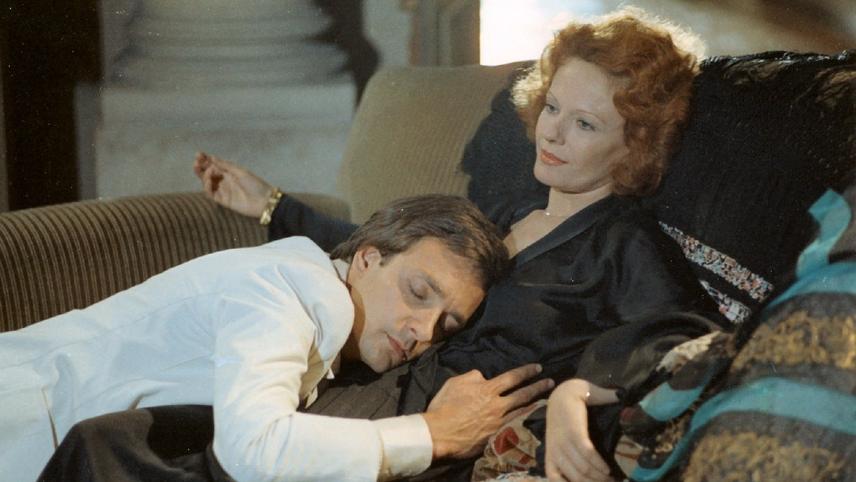
To many the funniest joke of ultra-campy film director John Water’s 1981 comedy Polyester was a sight gag involving a billboard for the “drive-in art theater” owned by one of Polyester’s characters. The billboard proclaimed that the current bill of fare was a dusk to dawn marathon of three features by French director Marguerite Duras, the centerpiece of which is India Song.
The whole point of the joke is that the mere thought of seeing any of Duras’ work in any setting other than the toniest of art houses or museums is pretty preposterous. Duras was one of the great French literary figures of the 20th century and, unlike many from the literary field who go in to film hoping for fame and fortune in a more commercial medium, her somewhat limited filmography seems to be an extension of her literary efforts.
India Song has its roots in a play Duras withdrew before it was to open. The plot concerns Anne-Marie (the excellent European actress Delphine Seyrig), the wife of a diplomat assigned to India. The local culture and any interest she might have cultivated in diplomatic life have washed over her, if there was ever any interest initially.
So, Anne-Marie is losing herself in one meaningless affair after another. More a study in character and style (with interesting work concerning a soundtrack which often does not match up to the images on the screen) than a plot driven film, the picture was shot largely in a once grand but abandoned chateau in Paris with no one ever coming near India itself. Many find this and all of Duras work esoteric in the extreme but her work does show a great mind touching the cinema.
21. 1900 (1976)
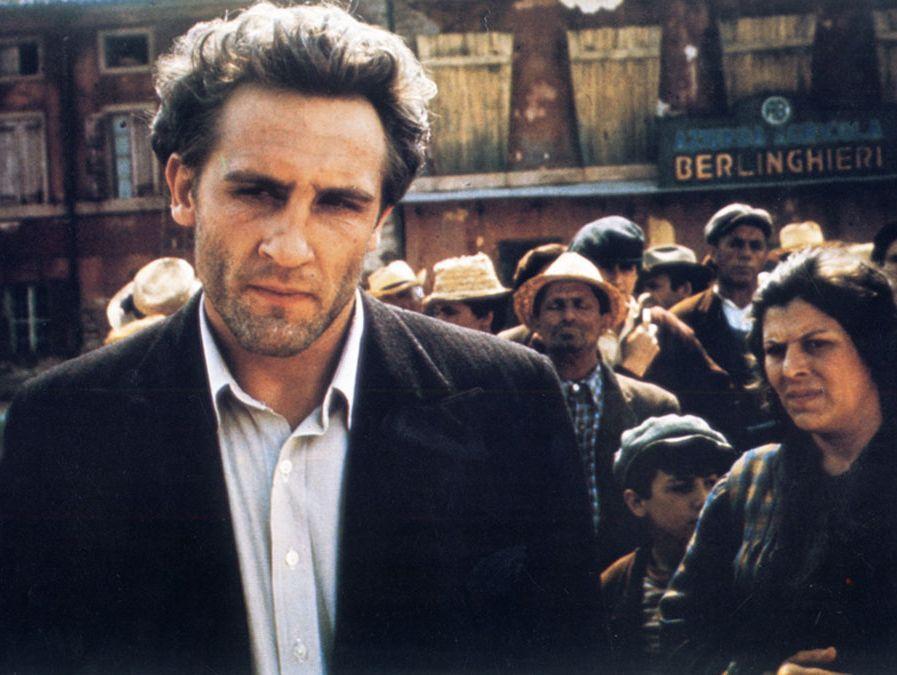
The international success of 1974’s greatly controversial Last Tango in Paris opened more than a few doors for Bernado Bertolucci and one of the biggest of those doors was the chance to finally make a big epic film in the style of his cinematic hero, the great Italian director Luchiano Visconti. The result was the massive 1900, one of the longest films (five hours) to ever be released commercially.
The story begins on a momentous day in 1900 when Italy will morn the death of the great composer Verdi but a great estate will celebrate the birth of a son/heir named Alfredo (played as an adult by Robert DeNiro) and a peasant family who had long lived and worked on the estate must tolerate the birth of a bastard son named Olmo (the great French actor Gerard Depardieu).
The two will become great friends despite the differences In their respective places in society. However the nearly half century the plot encompasses will take in two world wars and economic depression, which will take a toll on the relationship.
The theme concerns how the long ruling aristocratic class becomes out of touch and obsolete while the proletariat must rise to take over the country. Donald Sutherland excels in the role of an evil estate overseer representing the World War II era Fascists who held power for a most unfortunate time.
The well chosen cast also includes Dominique Sanda as Alfredo’s unhappy wife of convenience, veteran Italian star Alida Valli, iconoclastic Hollywood actor Sterling Hayden as Olmo’s grandfather, leader of the workers and Hollywood royalty Burt Lancaster as Alfredo’s noble grandfather (and an overt homage to Visconti’s classic 1963 epic The Leopard, in which the actor played a similar character).
The film’s length caused it a number of problems (and it was often cut down in various countries) but the lush production values (enhanced by Vittorio Storaro’s fine cinematography) and the skillful political themes incorporated into the story made 1900 a notable film of its day and in film history.
22. The Ascent (1977)

The cinema has had many figures in every decade who would have tragically short careers and lives. The Seventies had its full complement of such film makers but one of the most intriguing was a woman in an era without too many female film makers and, even more surprising, a Soviet woman.
Larisa Shepitko only created a small handful of films before her death in a 1979 car crash but she had shown great potential due to her skill and willingness to produce films of strong content. Her best known (and best for many) was the World War II drama, The Ascent. Two Russian soldiers on patrol looking for food run afoul of German soliders while hiding in the home of a sympathetic countrywoman.
The three are tortured and slated for execution. Two of them will display courage in tragic circumstances while the third will show cowardice and have to live with heavy consequences. The film was a big hit on the festival circuit and has steadily gained recognition since its release. The picture stands as a tribute to what might have been a great career.
23. Man of Marble (1977)
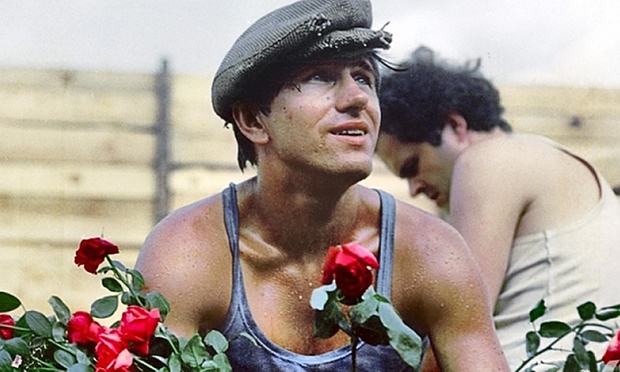
When the Iron Curtin fell in the 1980s, it happened so relatively quickly that many later forgot that the days just prior to that event weren’t happy times in the Soviet Block countries, most especially in Poland, where a tense standoff had long been in progress. Andrzej Wajda has long been one of Poland’s finest film makers and his films depicting this moment in time stand among his best.
The plot of Man of Marble concerns Agnieszka (Polish star Krystyna Janda, in her film debut) a young film making student who has decided to make her thesis film a documentary concerning the life of Mateusz Birkut (Jerzy Radziwilowicz), a bricklayer who, years earlier, had been used in propaganda materials as the symbol of what Polish workers should be. However, he had abruptly vanished from the public eye and nothing was ever said about what had become of him.
As the young woman gets closer to the truth concerning the worker, especially when she tracks down the man’s son, the authorities start to close rank concerning the project. Wadja was not able to use the planned ending which revealed the man had died during an infamous time of Soviet-Polish labor turmoil but the implication of that was allowed to remain.
However, Wadja was able to make a follow up film, Man of Iron, which explored the son’s struggles in the then present day Poland. These were brave documents to have made in a troubled time and the director’s great talent makes them great pieces of their country’s history.